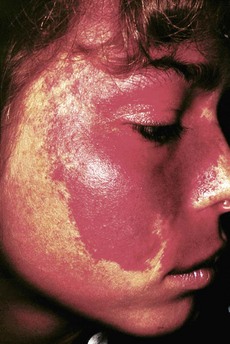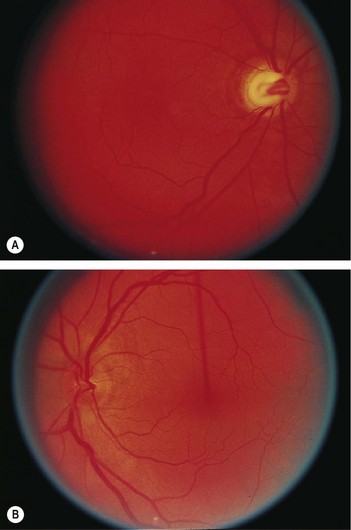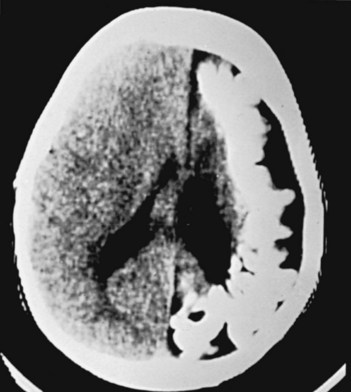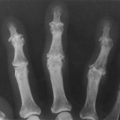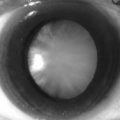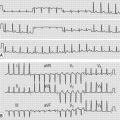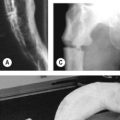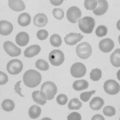183 Sturge–Weber syndrome (encephalotrigeminal angiomatosis)
Salient features
Examination
• A port-wine stain is present on the face in the distribution of the first and second division of the trigeminal nerve (Fig. 183.1)
• Look for haemangiomas of episclera and iris
• Tell the examiner that you would like to:
Advanced-level questions
What other ocular manifestations do you know?
Choroidal angioma, glaucoma (in 30%), buphthalmos (large eye), optic atrophy.
What is the histology of port-wine stains?
They are composed of networks of ectatic vessels in the outer dermis, under a normal dermis.
How would you treat such a patient?
• Treatment is aimed at the pharmacological control of seizures.
• The patient should be referred to the ophthalmologist for management of increased intraocular pressure or choroidal angioma.
• Photothermolysis to treat the port-wine stains. If this occurs in early childhood, the psychological burden on the family and child may be alleviated. The pulsed dye laser provides individual pulses of 0.35 ms at 585 nm. It is the treatment of choice for most port-wine stains, particularly in children. Wavelengths of 577–590 nm are optimal as they are minimally attenuated by epidermis and dermis, and strongly absorbed by blood. Pulse durations of 0.5–5.0 ms produce only transmural injury to the vessel wall, by heat conduction from hot red cells, and hence prevent non-specific dermal injury. One study reported that there was no efficacy in treating port-wine stains with flash-lamp-pumped dye laser in early childhood compared with at a later age (N Engl J Med 1998;338:1028–33).

